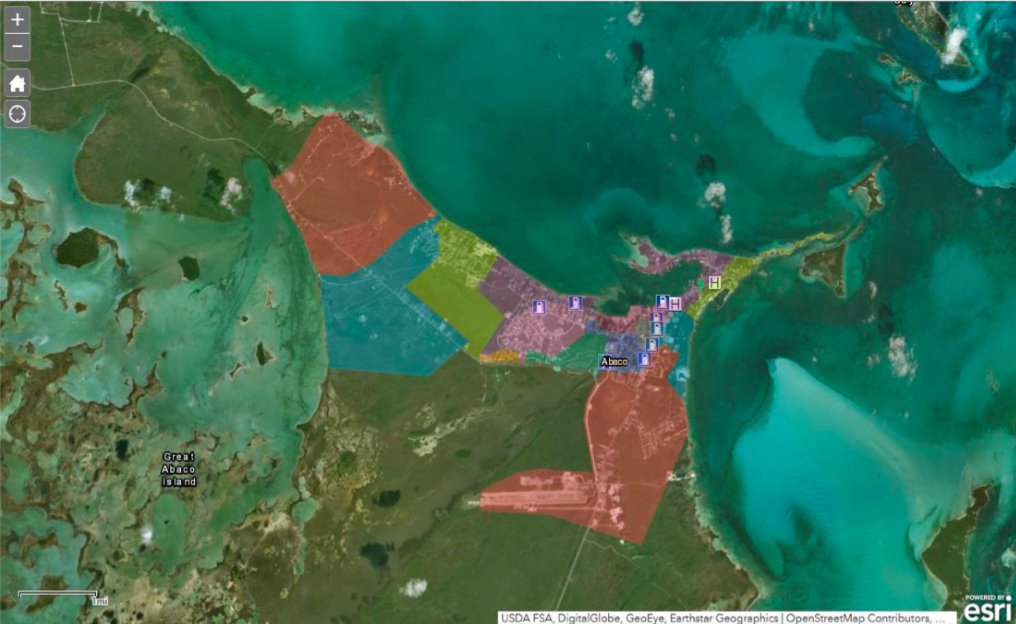NASSAU, BAHAMAS – The Ministry of Environment and Housing estimates more than 900 workers will be needed to execute its Debris Management Plan (DMP) to clear hurricane-ravaged islands.
Prepared by Ministry of the Environment and Housing Senior Deputy Director Thomasina Wilson, the report notes Abaco and Grand Bahama do not have enough qualified personnel to execute debris removal due to the scale of Hurricane Dorian’s impact.
Debris and resource estimating models peg the total number of debris collection personnel required in Grand Bahama at 680; with debris segregation personnel at 400; and 107 debris monitors.
The report indicates 365 debris crew personnel will be needed for Abaco; with 214 for debris segregation; and 60 debris monitors.
“Given the scale of this mission, the affected island do not have enough currently qualified personnel to perform the project,” the report read.
“Government should consider an experienced debris contractor with a record of hiring and training local personnel in positions such as equipment operators, quality control managers, safety officers, mechanics, project superintendents and many others.
“The goal is to hire residents to inject dollars back into the local economy while training them for future reconstruction projects and disaster resiliency.”
The 62-page report, obtained by Eyewitness News Online, is dated November 12, 2019.
Wilson has been identified as debris mission manager, and cleanup has already begun in the shantytowns in Abaco.
The plan strategizes for the massive debris mission resulting from Hurricane Dorian and “provides a framework for organizing the rapid, safe and cost effective separation, removal, recycling and disposal of disaster generated debris resulting from Hurricane Dorian; and minimizing debris generated threats to public health, safety, the environment and the economic recovery of the affected areas”.
According to the report, there is an estimated 1.09 million cubic yards of debris in Abaco and 2.06 million cubic yards of debris in Grand Bahama.
The department has established a timeline of 180 days to the total removal of debris.
The report said after segmenting the debris management process, government can identify numerous job opportunities for direct hire of local residents and Bahamian small business,” the report said.
The job opportunities outlined include debris monitor, debris segregation crew, equipment operator, foreman, quality control manager.

The report noted Bahamian small businesses can participate in debris hauling, specialty debris removal, and haul out of residual debris.
“By providing these various work opportunities the debris mission can help inject vital dollars in the local economy,” the report indicated.
Challenges identified range from geography and logistics given the affected island are comprised of many island and cays that can only be accessed by boat or plane.
To address this, the department plans to consider each island as its own project within each district and to use the barge network between the islands and districts to facilitate the concept.
For Abaco, 16 zones have been identified for the debris management project.

Each zone, which will be split into subzones, will require a workforce.
“This methodology allows the department to exert greater project control, allocate resources efficiently, collect and display debris data, effectively manage quality control measures, ensure adherence with project specifications and communicate with the public regarding collection dates,” the report said.
Each designated area will have a district manager, a zone supervisor, debris management site managers, specialty debris supervisors, monitoring supervisors and data managers, according to the report.
The district managers will report to the Wilson.
The report suggests that seven to 12 saw men, laborers and flagmen will be required for each sub-zone.
A further look at the project scope shows, in each zone a two to three person team will be required for white goods removal with a half-ton or one-ton truck with lift gate and trailer; two to three people with the same equipment for gasoline powered tools removal; and a two-person crew with truck and trailer with affixed gaylord boxes for electronic waste removal.
Another two to three-person team with a truck and trailer with 55-gallon drunks affixed to each side of the trailer will be required for household hazard waste removal in each zone; and two to three people with a forklift, tele-handler with form attachment for vehicle and vessel removal, which litter Abaco as a result of the over 20-feet storm surges that impacted the island.
The report noted the Department of Labour can provide safety oversight during the project, and help promote a high level of employment in the affected areas by releasing public information regarding the hiring practices of the government and contractors.
It stated amassing enough equipment to service each island simultaneously is overwhelming, but the organizational approach can help to alleviate the challenge.
“Each island plan considers its own management cell and subcontractor within a large prime contractor network to collect debris from the public roadside,” the report states.
“The non-profit organizations should organize in a similar manner to help affected residents move debris from private property to the public roadside for collection.
“Lastly, to ensure availability of resources, government should waive all duty and customs taxes associated with mobilizing debris-specific equipment into The Bahamas,” the report read.






